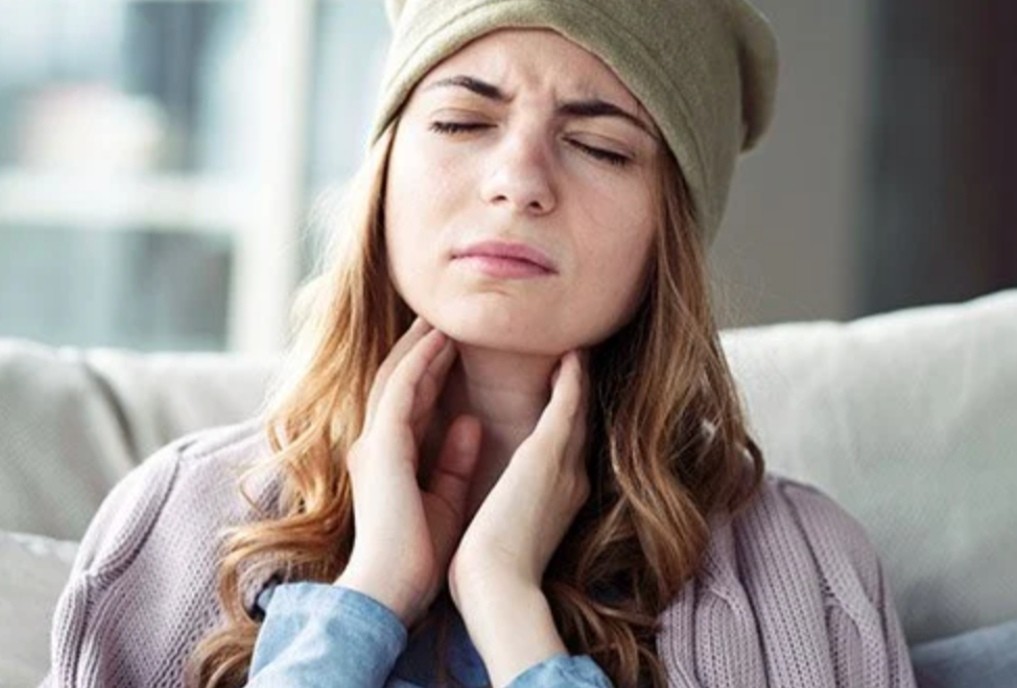Published - Thu, 20 Oct 2022

Peritonsillar Cellulitis and Peritonsillar Abscess
When acute bacterial tonsillitis is present, there is always the possibility of spreading to surrounding tissue in the pharynx.
1. Peritonsillar cellulitis is an infection that has spread to the surrounding area, causing inflammation and edema in the peritonsillar area.
2. Peritonsillar abscess is present when the infection progresses to form an abscess or collection of pus in the pharyngeal pillar.
ETIOLOGY
The most common cause is β-hemolytic Streptococcus, but often the infection is polymicrobial, involving Streptococcus pneumoniae, H. influenzae, and Staphylococcus, as well as anaerobes such as Bacteroides fragilis.
COMPLICATIONS
Local extension of the cellulitis or abscess can lead to more serious conditions:
a) Extension of the abscess into contiguous neck spaces, including the retropharynx, subglossal spaces, and mediastinum
b) Erosion into the carotid artery, leading to life-threatening hemorrhage, or into the internal jugular vein, leading to septic thrombosis
CLINICAL FEATURES
1. Symptoms
a) The classic features of tonsillitis—fever, sore throat, and odynophagia —are present for 2 to 3 days. The throat pain localizes to one side. The patient may drool because of an inability to swallow.
b) The patient may also complain of dysphagia, dysphonia, and referred pain to the ear.
2. Physical examination findings
a) Trismus (spasm of the muscles of mastication) may be present and the patient may have difficulty opening the mouth.
b) Marked swelling of the pharyngeal pillar displaces it downward. Pushing the uvula to the other side.
— In peritonsillar cellulitis, the pillar will be soft and not as enlarged as it is in patients with a peritonsillar abscess.
— In peritonsillar abscess, the pillar is larger and firm or fluctuant.
DIFFERENTIAL DIAGNOSES
a) Epiglottitis does occur in adults, and an absence of pharyngeal findings or the presence of stridor should warrant consideration of this diagnosis.
b) If a non-infectious asymmetrical swelling is present, squamous cell carcinoma, lymphoma, a vascular lesion, or other neoplasms should be considered.
c) Mononucleosis and other viral infections, as well as diphtheria, must be ruled out.
EVALUATION
1. Needle aspiration of the tonsillar pillar allows differentiation between cellulitis and an abscess. Failure to aspirate pus in a soft pillar will indicate cellulitis, whereas the diagnosis is peritonsillar abscess if pus can be aspirated.
2. Laboratory studies are of little value in the diagnosis. However:
a) In septic, dehydrated, or diabetic patients, additional workup, including a CBC, serum electrolyte panel, and a glucose level, may be appropriate.
b) If mononucleosis is suspected, a monospot test may be of value.
3. Imaging studies: CT scans can delineate the size and location of cellulitis/ abscess and the risk of impending airway compromise.
THERAPY
1. Abscess drainage: If an abscess is present, it needs to be drained.
a) Needle aspiration without opening the abscess is advocated by some.
b) Incision and drainage by opening the abscess with a scalpel and gently opening the space with forceps is the second option.
2. Antibiotic therapy
a) Patients who can swallow and are not dehydrated or toxic can be administered oral antibiotics. Acceptable regimens include:
— Amoxicillin-clavulanate (875 mg every 12 hours)
— Clindamycin (450 mg every 6 hours)
b) Dehydrated patients who are unable to swallow should receive intravenous fluids and antibiotics.
— Ampicillin-sulbactam (3 g every 6 hours)
— Clindamycin (600 mg every 6 hours)
3. Supportive therapy
a) Saltwater gargles often help soothe the throat and rinse the incised pillar. Mouthwashes should be avoided because they are irritating.
b) An analgesic/antipyretic agent should be prescribed.
DISPOSITION
1. Discharge: Patients who are discharged after initiating intramuscular or oral antibiotic therapy should be seen within 24 hours for reevaluation. These patients should be instructed to return to the ED if they experience trouble swallowing or breathing.
2. Admission is required for any patient who is unable to swallow, dehydrated, toxic, or immune-compromised.
3. Referral: Consultation with an ear, nose, and throat specialist should be arranged if the patient was not seen by a specialist in the ED.
Created by
Comments (0)
Search
Popular categories
Latest blogs

All you need to know about Syphilis
Tue, 15 Nov 2022

What is Pemphigus Vulgaris?
Tue, 15 Nov 2022

Know about Scorpion Stings
Sat, 12 Nov 2022

Write a public review